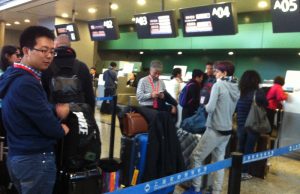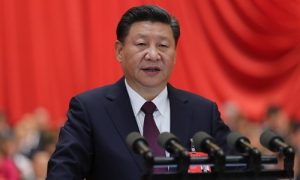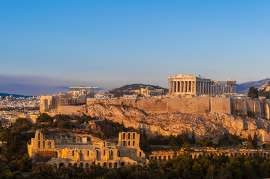Uncovering world’s best culture requires some exploration
It’s not hard to identify the cultural capitals of the world. Cities such as Paris, Rome, London, Istanbul, Berlin and New York are the first-round picks for travelers seeking the best of fine art, architecture, history, music and food. And deservedly so — any one of these towns offers such an embarrassment of riches, it would be easy to spend a lifetime exploring their greatest hits.
With Paris’s museums and Rome’s architecture, Berlin’s art scene and New York’s gastronomy, why bother looking farther afield?
There are, actually, many reasons. Some of the world’s best, most interesting cultural offerings, monuments and movements can be found outside the major centers.
As any well-traveled polyglot knows, some of the best finds require veering off the beaten path (and perhaps down the stairs and through an unmarked door). For every well-trod favorite there is a lesser-known city with a buzzing cultural scene worth discovering and mercifully few tourists vying for access to the best sites.
Those visiting Germany, for example, might skip Berlin in favor of Dresden, a gorgeous Baroque metropolis that was the center of German high culture until it was destroyed during World War II. Its famous philharmonic survived, though, and a painstaking restoration process has revitalized the city as a destination for art and architecture.
Or contemplate Helsinki: The Finnish capital rarely makes the list of European places to visit, but the city, named 2012’s World Design Capital, is exploding with new design initiatives, cutting-edge architecture and creative innovation.
Whether undergoing a renaissance or remaining a well-kept secret, all the destinations on this list are — suffice it to say — worth the journey.
GALWAY, Ireland
The scene: A seaside sampling of traditional Irish heritage.
The signature: Galway lies on the coast of Ireland, in a part of the country strongly connected to traditional Irish culture. (Many of the city’s outlying villages are primarily Gaelic-speaking.) Visit Taibhdhearc na Gaillimhe, the country’s national Irish language theater, to get a taste of the interplay between Ireland’s heritage and the city’s art scene.
Insider knowledge: Galway is a wonderful place to hear traditional Irish music — or “trad” music. Skip tourist traps and opt instead for local pubs like Crane Bar.
Don’t miss: The beautiful St. Nicholas’ Collegiate Church, which was built in 1320 and has the distinction of being the largest medieval parish church in the country.
ALMATY, Kazakhstan
The scene: A post-Perestroika bloom of experimental art and theater against a backdrop of traditional architecture flourishes.
The signature: For an introduction to Kazakh culture, visit the National Museum, which stands across from the presidential palace and offers exhibits on Kazakh art and history. Afterward visit idyllic Panfilov Park to see St. Ascension Cathedral, which is one of the largest wooden structures in the world built entirely without nails.
Insider knowledge: The theater scene is where the most interesting, cutting-edge art is happening. Catch a show at Art & Shock Theatre, the internationally acclaimed conceptual theater group, or visit Lermontov Russian Drama Theatre, which stages Russian plays Tuesday to Sunday and turns the theater into an exhibit space for local contemporary artists on Mondays.
Don’t miss: An exhibit at Arvest Art Gallery, which opened five years ago and has quickly become the contemporary arts center of the city.
ANTWERP, Belgium
The scene: Quirky and modern northern European style meets classic Flemish elegance.
The signature: Antwerp is a blend of the historic and the contemporary. For a taste of the historic, visit the iconic 14th-century Cathedral of Our Lady, which houses several important paintings by Peter Paul Rubens. For a modern turn, stop by the flagship location of Dries Van Noten, Antwerp’s most significant avant-garde fashion designer.
Insider knowledge: Typeface enthusiasts will love the Museum Plantin-Moretus, which honors the history of typography. The collection includes the two oldest printing presses in the world. Plan to go at the end of the week since the museum is located in the Vrijdagmarkt, a 16th-century square known for its Friday market.
Don’t miss: Rubenshuis, the former home and studio of the painter Rubens. The house is an architectural curiosity, built to resemble a Renaissance-era Italian palace and featuring a Baroque garden and a portico. Guests can tour here now and see many of the artist’s most famous works, including Adam and Eve.
DRESDEN, Germany
The scene: An old cultural hub revives 60 years after mass destruction.
The signature: Before World War II, Dresden was Germany’s arts capital, but much of its famous architecture was destroyed in the firebombing of 1945. The stone Frauenkirche, or Church of Our Lady, underwent a $218 million restoration in 2006 to mark the city’s 800th birthday and now anchors the Altstadt (Old Town). See other beautifully restored Baroque buildings here, like the Zwinger Palace or the Semperoper.
Insider knowledge: Six times a year the illustrious Dresden Philharmonic performs in the Frauenkirche — including concerts for Advent and New Year’s and two events this coming season to mark Wagner’s 200th birthday.
Don’t miss: Visit the Military History Museum to explore how the city has been affected — structurally and socially — by war. The museum, one of Germany’s largest, is only a year old but offers important, if painful, insight into Dresden’s cultural past.
HELSINKI, Finland
The scene: Imaginative, hyper-current European design.
The signature: Helsinki is nearing the end of its year as the World Design Capital, a distinction that brought a major influx of artists, events and design-related projects. There is plenty to catch between now and December, including a food-and-design pop-up market at the city’s abattoir (slaughterhouse) and the timber-made Kamppi Chapel of Silence, recently built in bustling Narinkka Square.
Insider knowledge: Only Helsinki’s food scene rivals its design scene. Visit Chez Dominique, the city’s only restaurant with two Michelin stars, to sample Finnish gastronomy at its most elevated. Or swing by Herring Market for a taste of Helsinki’s fishier heritage.
Don’t miss: Wander Punavuori, the Design District, to get the most concentrated dose of Helsinki style. The neighborhood boasts a little of everything, from antiques and fine art at Haddadin to runway fashions from Ivana Helsinki, an art, fashion and film collective that just showed at New York fashion week.
HAVANA, Cuba
The scene: A postcolonial time warp with a thriving music scene.
The signature: A decades-long embargo has taken Havana off the radar for most American travelers — and suspended the city in the aesthetics of the 1960s (picture old Ford Thunderbirds on the roads) — but the music keeps evolving. Hear Cuba’s biggest acts alongside up-and-comers at Casa de la Música Miramar.
Insider knowledge: Skip the government-run restaurants and opt instead for paladares, privately run eateries like La Galería, which serves elevated Cuban fare on a breezy terrace.
Don’t miss: El Malecón, an esplanade and seawall that begins in Old Havana and stretches four miles up the coast. The walk offers views of several of the city’s important historical landmarks, like El Morro castle and the Castillo de San Salvador de la Punta.
Le Mans, France
The scene: Ancient history meets pastoral French charm.
The signature: While best known for its epic annual 24-hour auto race, Le Mans dates back to the first century B.C. and has a rich cultural history, including links to the Plantagenet dynasty. Visitors can wander cobbled streets among 15th-century timber houses in the old town, and the recently renovated Carré Plantagenêt gives a good overview of the region’s history.
Insider knowledge: The Entre Cours et Jardins Festival gives the public access to roughly 20 exquisite — and often classically French — private gardens in the region.
Don’t miss: The original Gallo-Roman walls and Roman baths that lie near the outskirts of the city. Source: CNN











